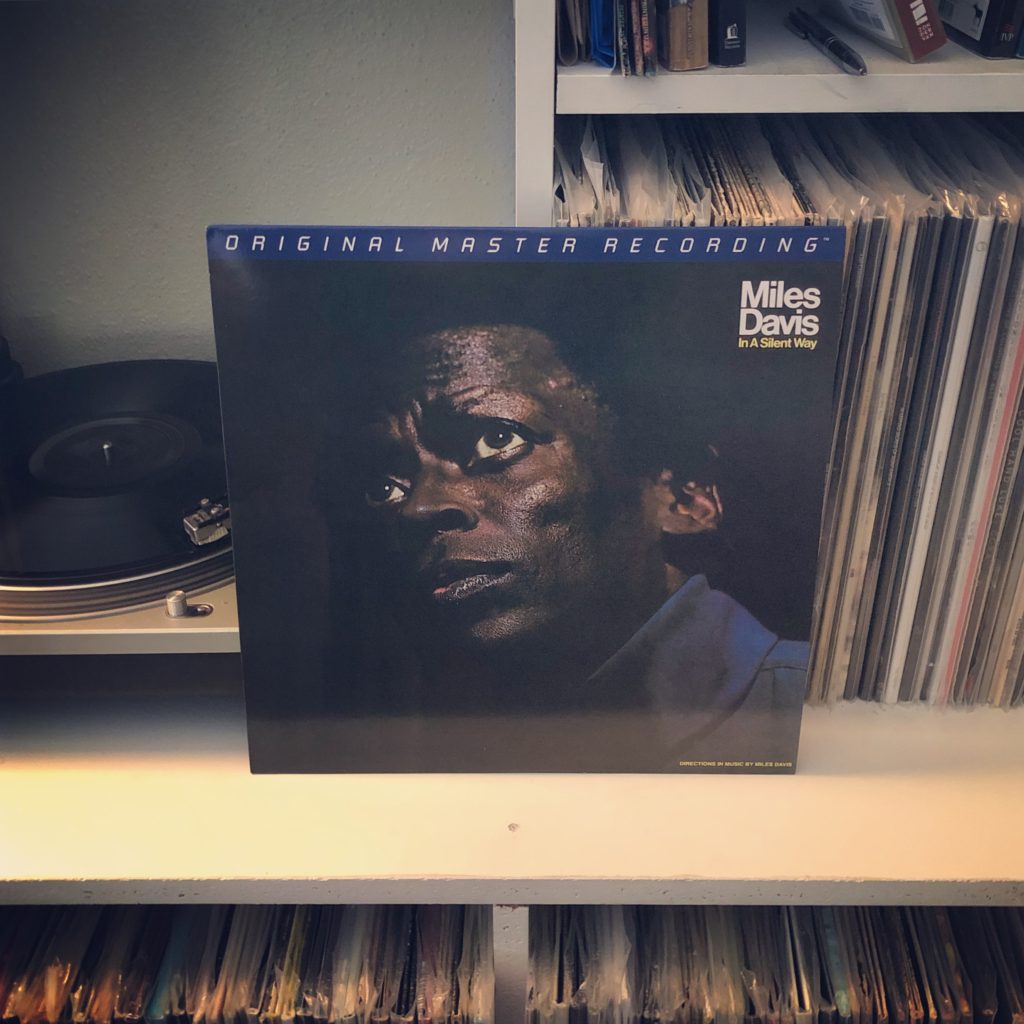
Throughout his five-decade career, Miles Davis record over fifty records as a bandleader (and dozens more as a sideman). But none of those records are as singularly important than 1969’s In A Silent Way.
And no, that’s not an exaggeration.
Davis has never been afraid of experimentation. He played alongside Charlie Parker as he pioneered bebop. Then, he eschewed the quick chord changes of bebop and swing in favor of modal “cool jazz,” as perfected on 1959’s Kind Of Blue.
Ten years later, he was ready to change the direction of jazz again.
While players like Ornette Coleman and Davis Quintet alumni John Coltrane spent the mid-60s playing free jazz, Miles was a bit more restrained. He avoided that explosive catharsis in favor of powerful restraint. But through that supposed meekness, Miles had impeccable taste with who he surrounded himself with.
Two of his sidemen were Herbie Hancock and Tony Williams, who were imbued with their own sense of fierce adventurism. Even through the laid back performances on My Funny Valentine, Herbie and Tony are fearless and inventive. And in the years that followed that live record, the two would bring that inventiveness to Davis’ “Second Great Quintet.” The records during this period are understated but well-esteemed.
Then, a shift happened.
Miles’ wife Betty was a fixture in the rock and roll scene, and introduced Miles to rock musicians like Sly Stone and Jimi Hendrix. This sparked a fascination with electric instruments that would change Davis’ trajectory forever.
At the same time, Tony Williams had convinced British electric guitarist John McLaughlin to move to America to join his new group Tony Williams’ Lifetime. One night at a party, Williams introduced McLaughlin to Davis. He was instantly impressed, and invited him to come into the studio with him the next day (John would remain one of Davis’ most consistent collaborators for the next decade). In that single studio session, they created In A Silent Way.
McLaughlin wasn’t the only new face in the studio that day. Herbie brought his friend Chick Corea, who was himself fascinated with electric pianos like the new Fender Rhodes and had previously played on Davis’ Filles De Kilimanjaro. Also present was Miles’ friend, keyboardist and organist Joe Zawinul—a man Miles once described as “a man without cliche.”
Those newcomers joined Miles’ second great quintet, assembling a massive eight-piece outfit. And unto this room of some of the most talented musicians in the world, he asked them to practice restraint. According to McLaughlin, the direction was, verbatim, “play it like you don’t know how to play guitar.” The resulting session was revolutionary, creating perhaps the first ambient record ever. Williams’ spends most of his time shuffling on a hi-hat with almost no fills. Bassist Dave Holland thumps a repeated figure for bars a time. Corea, Hancock, and Zawinul vamp on the keyboards gleefully without ever breaking into virtuosic soloing.
But perhaps more revolutionary is producer Teo Macero’s editing work. After the group recorded three hours of music, Teo took the tapes and cut it down to two twenty-minute pieces. Such a thing had never been done in jazz before, and was partially to blame for the disdain this record received upon its release.
That disdain has been lost to antiquity, though. In A Silent Way is now remembered as the first album in Davis’ Electric Period, which includes his most well-remembered work. But this record is largely distinct than the rest of his electric records for its simplicity and deliberateness. This record kickstarted the jazz fusion revolution, but its influence transcends jazz. In fact, you can draw a straight line between this record and post rock (Talk Talk’s Laughing Stock is the common factor).
There are very few records that I could entertain as being my favorite record of all time. This is one of them. Every time I listen to it, new facets unfold—and I listen to it a lot (it’s one of the few records I own with a second copy in my bedroom collection). It is a perfect record, and one of the few records dotted across music history that you can point to and say, “right here. This is where everything changed.”